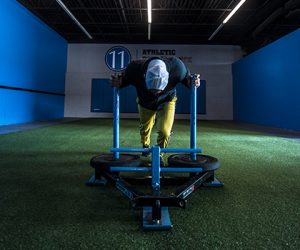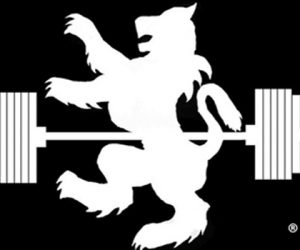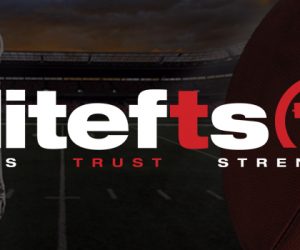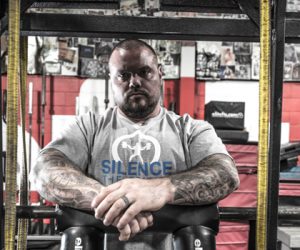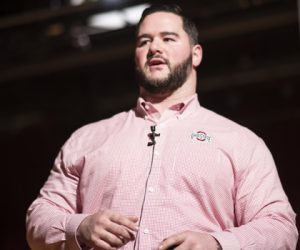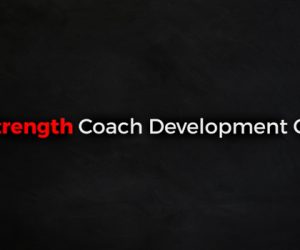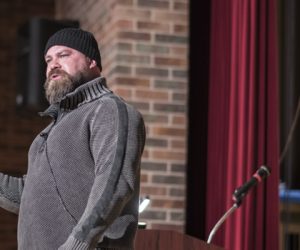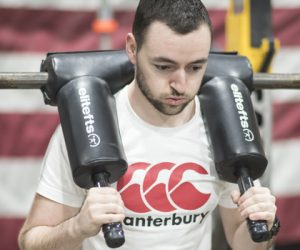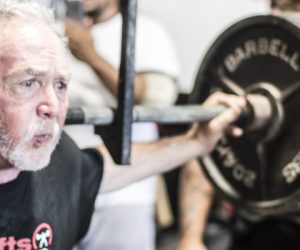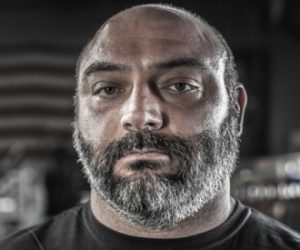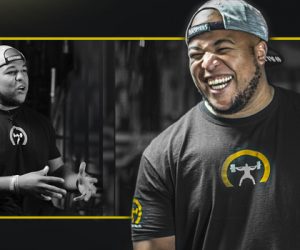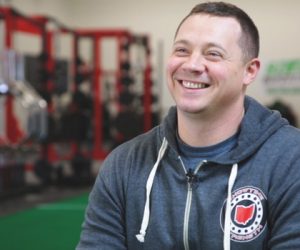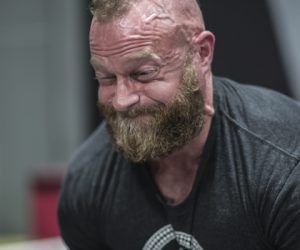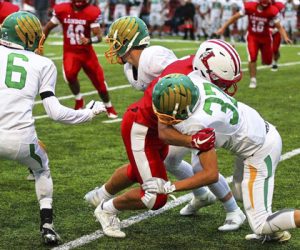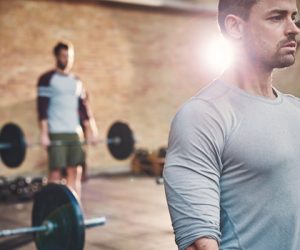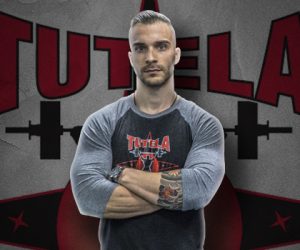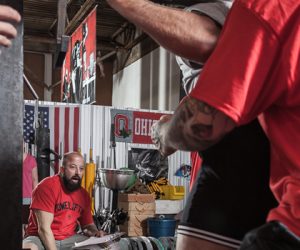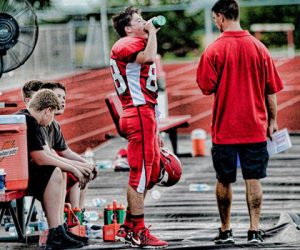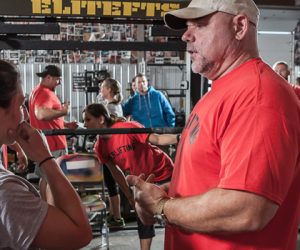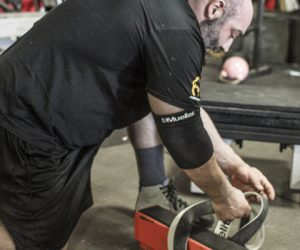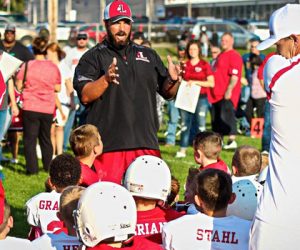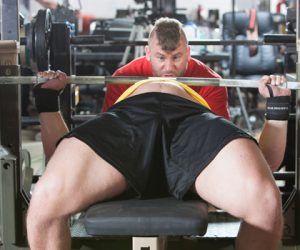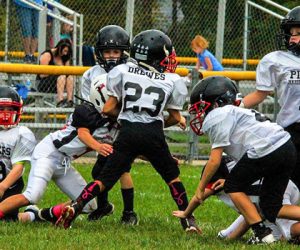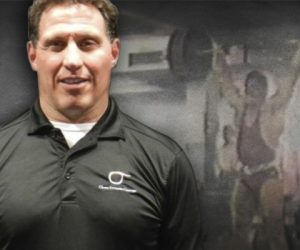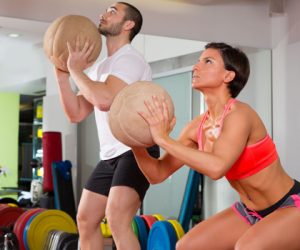WATCH: From Collegiate Defensive Lineman to NFL Fullback — Brian Saunder...
Making it to the NFL isn't easy. It's even harder when you're changing positions from the one that made you so successful in college.
Stronger Necks, Fewer Concussions
Neck training can be done with isometric or range of motion exercises, performed self-administered, working with a partner, or with equipment. I've recently begun to trial a new device to take this training even further.
Athletes and Strength Training Technique
Because an athlete's focus is sports performance, they may be less concerned with consistency in strength training, or they may harbor a false belief that having great technique during weight training is relatively unimportant. Change this.
Trust the Process — Perfection
Turn into the head coach of the weight room. Come up with a plan to cover everything down to the finest detail.
Championship Nature Series: The Circles of Concern and Influence
Of the many things in your life that you care about, there are some you can control and some you cannot. Being aware of the difference will not only make you more successful but also happier.
Do You Eat, Sleep, and Breathe School and Sports (Like the Lions)?
When the Gateway Lions Academy approached me a few months ago to train their soccer athletes, I was excited. Almost 100% of them are just pure raw talent, and their skillset and work ethic are unreal.
WATCH: Phil Matusz 2018 elitefts Sports Performance Summit Presentation ...
As Associate Director of Strength and Conditioning for The Ohio State University football team, Matusz knows what it's like to be in a high-pressure environment. And that's when your leadership really counts.
Get Your Exercises Right: Four Movements You Aren't Using Enough
These exercises are not commonly used but they deserve a place in your strength and conditioning program. We've tested them on our athletes and on ourselves and we believe in them.
The Coach's Guide to Programming and Periodization: Basic Principle...
We can't simply throw random exercises and set and rep schemes on a piece of paper haphazardly and then hope for the best. In this series I will teach you how to write programs, including a coach's assignment for each article.
WATCH: Jim Wendler's 2018 elitefts Sports Performance Summit Presen...
To close his presentation, Wendler discusses exercise selection, indicators of athlete readiness, and the importance of knowing the trapdoors of your training program.
Collegiate Athlete Essentials: Parameters for Incoming Athletes
This method has worked well in the past and could help you with your starting point in the programming for your athletes.
Self-Efficacy: The Science of Getting Shit Done
According to Bandura, there are four major sources contributing to a person's individual self-efficacy. This is what coaches need to be building in their athletes.
My SPS Weekend and Visit to the S5 Compound
My recent trip to Ohio included attending the 2018 elitefts Sports Performance Summit and visiting the brand new elitefts office, warehouse, and gym. Along the way, I learned a lot about training.
In-Season Training Considerations to Uphold Off-Season Progress
Many programs account for energy system considerations and athlete deficiencies, but there are a number of other factors I believe are incredibly important for transitioning from off-season to in-season training.
WATCH: Jim Wendler's 2018 elitefts Sports Performance Summit Presen...
In the previous videos, Wendler discussed his general mindset and approach to strength and conditioning for a high school football team. In this segment, he goes into detail about how he has designed the training sessions.
Don’t Fear Failure — Hate It
Everyone loses sometimes, but that isn't the mentality you should mold your life around.
The Qualities I Look for in a Strength and Conditioning Intern or Colleague
When I interview someone and consider letting them join my team, these are the things I consider.
WATCH: Travis Mash's Barbell Life Podcast Episode 190 with Guest Dr...
In one of his most detailed podcast discussions yet, Dr. Bryan Mann shares a number of discoveries he's made about athlete training and the use of velocity based training.
Advice High School Lifters Will Ignore (But Shouldn't)
While putting together a training presentation for a local high school, I gave some thought to the things I wish someone would have told me in high school. I probably wouldn't have listened anyway, but here they are.
WATCH: Jim Wendler's 2018 elitefts Sports Performance Summit Presen...
When Jim took over the training, the team had no identity and had no idea what they were going to be as they entered the 2017 season. What they became was the strongest team on the field every night they played.
In-Season Softball Training Guidelines and Myths
The longer the season goes on, the more important it is to maintain performance. Don't spend the season losing the physical abilities built during the off-season.
Case Study: Programming Considerations for the Injury-Prone Powerlifter
Taking two of my lifters, let’s break down all the variables that come into play for individualizing their programming to keep them not only progressing but also healthy.
WATCH: Jim Wendler's 2018 elitefts Sports Performance Summit Presen...
The starting point with youth athletes today is drastically different than it was 30 years ago. This means the training plan needs to be different too.
Weight Room Lessons from Former Athletes
After writing about the importance of getting to know your athletes, I decided to take a real look at whether or not I've had an impact. I contacted two of my former athletes and asked them to tell me what they learned in the weight room.
Programming for Athletes — The High School Athlete: Grades 9-12, Ages 15...
During this stage we will teach our athletes, who should be proficient at performing basic skills, to perform those skills under competitive atmospheres in practice.
10 Commandments of Being a Strength Coach
These are important rules that you will never find in any classroom or lecture, passed down from strength coach to strength coach.
Simple Training Has Stood the Test of Time
I want to introduce some new training ideas to accelerate you from good to great by revisiting the past and adding a twist to several favorites.
An Interview with Paul Goodman, Head Strength and Conditioning Coach of ...
Goodman has coached at the collegiate and professional levels and earned multiple graduate degrees. Here are the things he has learned along the way.
The Conjugate Method for Group Fitness
Whether it be to feel better, move more weight, or run a marathon, this system has something for everyone. It is the no-brainer preferred choice for group programming.
In-Season Training: Communication, Trust and Buy-In
This was the first time running my program and my first time being a head guy, so I could have been completely off-base. Not many go into the season expecting to get stronger.
Unilateral Training in the High School Weight Room — The Missing Link
It is our job to be more efficient in our programming, and here is why unilateral work plays such a huge roll in that.
Strength and Conditioning Program for Youth Hockey from the Canadian Ice...
This program was designed for our players who spend half a day in traditional school and half a day training with us for AAA GTHL hockey, the premier youth hockey league in Canada.
The 5 Stages of Change
With this basic framework you can better understand how likely your clients are to stick to a program or diet, as well as where they might be in the behavior change process.
Know Your Audience: Learning More About Your Athletes
In the time since I wrote the initial "Know Your Audience" article several years ago, I've refined my coaching methods and changed many things, but the enduring message remains the same: get to know your athletes better.
All In — When I Got to Westside
Before I started training at Westside, I told my wife I was going to shut off my brain and do whatever I was told, no matter what. It was one of the best decisions I've made.
Programming for Athletes — The Middle School Athlete: Grades 7-8, Ages 1...
These athletes undergo rapid physical development, increased workloads, new mental health challenges, and hormonal changes. As they hit peak height velocity, it's vital to properly manage their training.
Establishing Team Culture in the Spring — FUNdamentals
This is a great opportunity for you as the strength coach to step in and provide the leadership and culture to propel your team forward in the fall.
Fall Training for Wrestlers: Programming and Deload Weeks
In theory, it's good to force your athletes to take a deload every fourth week. In reality, it rarely works out for the best. Here's an alternative option and a sample program that will keep things rolling in the right direction.
Sexual Violence and the Coach-Athlete Relationship
The goal of this article is to provide tools to understand, prevent, and act on the problems of sexual violence, with a focus on the coach-athlete interaction.
Living Better in a Profession of Martyrdom: Advice for Young Strength Co...
We need to think about the quality of life and how to increase longevity in this profession. What we are doing does not lead to it.
Game Changer: Rugby Programming Adjustments from the 40th NSCA National ...
Several incredible presentations from Paul Comfort, Mike McGuigan, and Bryan Mann led me me to make some key adjustments to the programming of my Metabolic Group.
7 Interviews with Lifters and Coaches I Respect
I made a list of people with informed opinions, from opposite ends of the country, with a wide variety of backgrounds. Their answers to these five questions demonstrate what is alike and what is different about their perspectives on training.
Coaching Is More Than Just Programming
Your clients are all looking for a combination of guidance, accountability, and a relationship with a coach. It's your job to figure out which of the three they need and how to best deliver it.
Moving Tips for Strength Coaches
Accepting a new coaching position and uprooting your life to a different city and state is one of the worst parts of our profession, but following these six steps can help simplify the process.
LISTEN: The State of the Training and Coaching Industry with Dave Tate
Direct and to the point, this short podcast led by Andy Rose focuses on only two key questions about the fitness industry.
How to Set up a Conference at Your University
One question I often get asked is, should I set up a conference at my college/university? Then I'm asked how to go about doing that. I hope to answer those questions here.
The Force-Velocity Profile: Reversing Imbalances Using the Dynamic Effor...
Last summer I was able to perform some informal research on 10 Division II football athletes examining how to reverse imbalances found in force-velocity profiling using velocity based training with a Tendo Unit and accommodating resistance.
Programming for Athletes — The Youth Athlete: Grades 4-6, Ages 10-12
This is the most important time in an athlete's career for learning motor patterns, and it’s the age range that can set up athletes for long-term success in their sport.
21 Again: Reflecting on Lessons from Over Two Decades as a Strength Coach
My time in this industry has taught me a lot. I'd like to share some pearls of wisdom I've picked up along the way that I think will be useful to others.
The Coach's Guide to Teaching the Bench Press
With beginners you need to follow a simple guide to get them going. Then once they're ready, you need to focus on the three phases of the bench press. It's all included in this article.
10 Ways to Drive Communication with Youth Athletes
None of these have to do with Prilepin's chart or buying better equipment, but they might just be what sets you apart from the next trainer, private sector coach, or school coach.
Want to Make the Industry Better? Be Better
Mike Gittleson once told me that becoming a good coach means learning to use your voice as a weapon. This changed everything about my mindset to communicating with my team.
Programming for Athletes — The Youth Athlete: Grades 1-3, Ages 6-9
Programming for this age must be based on the understanding that most speed and strength gains in young athletes are due to motor learning, improved motor coordination, and nervous system development/adaptation.
Football Conditioning Season Program Design
While there are some great things that can go on during this time period, there are also many times that football coaches run their guys into the ground with months to go before the players even see the competitive field.
Real Life Status — Who's Watching You?
After our recent bowl game, all-time great Denver Bronco and two-time Pro Bowler Rod Smith spoke to my team and shared an important message that got me thinking about my athletes and my personal mission statement.
Why You Should Use the Conjugate Method for Your Athletes
There are many faults in the traditional model of periodization when applied in a sports setting. The conjugate method not only overcomes these faults, but also provides numerous other benefits to your athletes.
Joe Gazio Memorial: Honoring a Great Weightlifter and Coach
As a tribute to Joe and his coaches, I’d like to share his knowledge of the Soviet training system. He knew these methods as well as anyone outside the USSR ever could.
Integrating Weight Training with Rugby Units Skill Training
This model sequences weight training and skills, with the weight training acting as a neural primer before moving to skill work and then bringing the players back to the weight room to complete the lower body session.
Educate Your Clients for Better Buy-In
It's easy to tell your clients why you're doing what you're doing, but it's much harder to prove to them they'll be rewarded for their efforts. Here are six steps to helping them believe in your methods and the work they're putting in.









